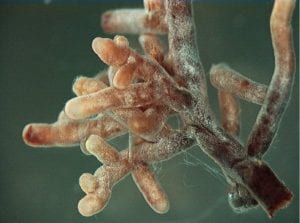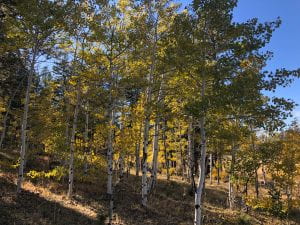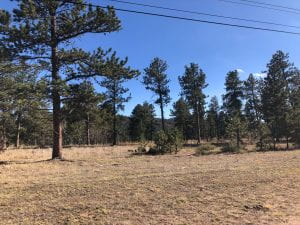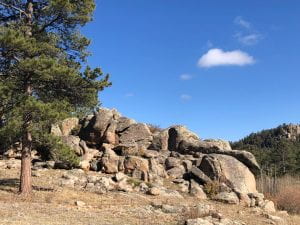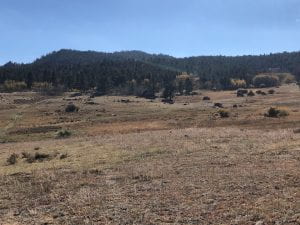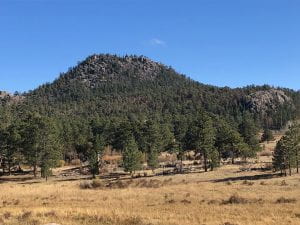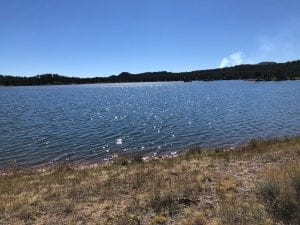(Click on the following link to listen to an audio version of this blog …. Housecat Day 2024
Eleven years ago I wrote about Groundhog Day and suggested that we change this early February day-of-prediction to focus not on an animal that should be sound asleep in his grass-lined burrow dreaming of gardens to ravage, but rather on an animal with whom we could more naturally base an ecologically or culturally significant day of hope for the coming spring.
I went through the pluses and minuses for using a number of different species for our new holiday including robins, bumblebees, scarlet tanagers and killdeers. Each of these animals had features that positively reflected the coming spring, but none of them matched up to the intent and timing of this odd, mid-winter holiday.
I also thought about using earthworms or the early spring butterflies (mourning cloaks and spring azures), but the timing of their activities were too close to the actual onset of spring! These animals wouldn’t get active soon enough to stimulate the anticipation and buzz for the joyous coming of the new season.
Four years ago someone suggested that stink bugs emerging from their hibernation hideouts in our houses might be a “good” sign of spring. I am of the opinion, though, that stink bugs are not a “good” sign of anything and am not seriously considering that well-intentioned but obviously misguided suggestion.
Taking all of this into consideration, I have again settled on what was, to me anyway, the most logical and most reliable and most available indicator species among us. That species, of course, is the housecat (Felis catus).
Cats are the most popular house pet in the United States (the Humane Society estimates that there 74 to 86 million house cats in the U.S. (as compared to “only” 70 to 78 million dogs)). As I wrote in my November 24, 2016 blog (“Our Other Best Friend”) and also in my recent January 18, 2024 blog (Signs of Winter 6, “Cats are Perfect”) cats have a complex relationship with humans and may be the only animal species that has chosen us as a co-evolutionary partner rather than vice-versa (hence the hypothesis that cats are not really domesticated at all but are wild animals exploiting our habitats and resources!). The resemblance of domesticated cats to their closely related wild species, the focus of many cats on places rather than people, and their perceived aloofness and self-absorption are factors that cause people to have intense feelings (both positive and negative) about cats. On the distinctly positive side of feelings for cats, the English philosopher John Gray in his recently published book (Feline Philosophy: Cats and the Meaning of Life) suggests that cats hold the secret to a well-live human life! How can we doubt philosophy?
A cat’s inherent love of sunshine and warmth, though, make them a perfect biological agent to help us predict the nearness of the coming warm seasons! And, since they are living in our houses year round, they are available for predictive experimentation!
So, eleven years ago on February 2, 2013 I took one of my cats, Mazie, out into the snow-covered front yard in Pennsylvania (I tried to take both of my cats, but my other cat, Taz, sensed that something was up and disappeared into one of her magical hiding places somewhere in the house). I put Mazie down in the yard (on a nice dry towel!), and left the front porch door open. If Mazie ran for the porch, then we would have six more weeks of winter. If she stayed on her towel or started walking around in the yard thus avoiding a dash back into the house, then spring was just around the corner.
I was amazed how fast she ran back into the house! But, that year the weather suddenly turned warm. March temperatures set record breaking highs (I even remember a day when it nearly got up to ninety degrees!). Maybe our predictive model was not articulated correctly.
In 2014 and 2015 I followed the same experimental procedure, and Mazie, as I reported in this blog, responded with equal speed and agility and got back into the house almost before Deborah could take the lens cap off of her camera. In both of these years winter hung on grimly well into March. Mazie’s predictions, then, fit the observed phenomenon.
In 2016, though, Mazie’s response to the front yard was entirely different. She stepped off her towel and explored the front flowerbed, jumped at some little Pardosa spiders that were running around in the grass and seemed to enjoy herself very much. The early onset of spring that this behavior predicted came about! We had a mild, pleasant March and April and eased our way into a warm, early summer.
In 2017 Mazie not only ran back into the porch but she headed straight for the basement and hid in a box in the furnace room for several hours! Her reaction, though, did not match the resulting weather as both February and March had average monthly highs of 66 and 67 degrees! Definitely an early (and sustained) Spring!
In 2018, Mazie ran from the cold and snow and predicted six more weeks of winter. The rest of February was a roller coaster of temperatures bouncing from the teens all the way to 77 degrees (on Feb 20)! March, then, was cold and snowy but finally finished up in the 60’s. Sounds like Mazie nailed her prediction again!
In 2019, Mazie took control of her House Cat Day performance. Just before 2 pm she went to the front door and meowed to go outside! (we were waiting for the warmth of the day to build up before we took her out!). Deborah opened the door and Mazie walked out the door, down the deck stairs and out into the snow covered yard. She then went under deck and spent the next half hour exploring! This is the most “Spring Positive” reaction she has ever shown! Mazie predicted the immanent onset of Spring!
Observations of Feb and March 2019: first two weeks of Feb were warm, then after a cold spell the last week of Feb also warmed up. Then we had another cold spell until the second week of March where we hit (on Thursday March 14) 77 degrees! After that the highs stayed in the 50’s through the rest of March and the in the 60’s in April.
Overall, Feb/March 2019 was wet (almost 7 inches of rain) and more warm than cold.
We got about an inch of snow the night before the 2020 House Cat Day event, and it continued to snow through the morning. I was a bit worried about Mazie’s reaction to the outside world, but, in Pennsylvania 2020, the snow melted quickly and there was sunshine and 52 degrees by 3 pm. We opened the deck door for Mazie and she stepped boldly out. A gust of wind hit her in the face, but she shook that off and walked slowly down the stairs into the side yard. She walked on top of the landscape timbers that edge Deborah’s perennial flower bed like it was a balance beam and then stepped off into the wet grass of the yard. She sniffed the air and did not even look back at the deck. She stayed out for about 20 minutes and then came up to the sun room door to be let back into the house.
Mazie predicted an early spring! And the March and April data backed her up again!
March 2020 high and low temperatures were very close to average, but one-third of the days of the month had highs of 60 degrees F or greater! April 2020 also had average high and low temperatures very close to average but half of the days had highs that were 60 degrees F or higher and a number of these were over 70 degrees F! Also, there was no snow in either March or April! An early spring, indeed!
Mazie nailed it again! Her spring predictions have been correct 6 out of 8 times since 2013!
Take that, Phil (who is only right 40% of the time!)!!
Unfortunately, after a long and wonderful life, Mazie passed away just before we moved away from Pennsylvania. There was, then. no Housecat Day the first two years from our new home in Colorado. Last year, however, we corrected that situation!
In December 2022, Deborah and I adopted two kittens, Pezz and Pizo. We got them from the local Humane Society and they are sisters. Pezz is the smaller of the pair and has some of the quiet characteristics of Mazie. Pizo is a little bigger and a bit more athletic and has more of the aggressive attitude of Taz. Mostly, though, they are a bit of blend of the two extreme personalities.
On February 2, 2023, I took Pizo out the back door and put her down on the snow-covered patio. It was a sunny, cold afternoon, but she wandered all over the patio (even walking boldly across the snow!) and showed no intention of running back into the house. Pizo’s prediction: Spring is right around the corner!
Boy! Did Pizo get it wrong! As I wrote in my blog-email later in February:
“Friends and Family,
We’ve been watching a slow thaw after a “real” (according to the locals I have talked to) Colorado winter. My new snowblower has gotten a very good workout!
We have had a couple of weeks with days that climbed up over freezing in the afternoon, but it has been the intense sunshine that has melted most of the snow almost without consideration of temperature. Any place that is shaded still has deep, icy snow, and any place that gets both morning and afternoon sun is mostly clear. My front yard where my buffalo grass is planted has been slowly emerging from its snow cover. On a sunny day the snow pack recedes toward the south several feet, while on a cloudy day, even if it is above freezing, the snow line only moves a few inches. Any exposed concrete really heats up in the sun, and any snow or ice near the edge of the concrete melts.
The nature of the snow has changed a great deal. When it initially fell, it was dry and powdery and had a bright, sparkly surface that reflected a bright glow of moon and yard lights. As it has been exposed to the sun, though, the snow has melted into a slushy mass during the day which then freezes solid in the deep cold of the night (most of our overnight lows have been in the single digits or colder!). The snow, then, has gone glacial on us. Just a few degrees colder and we would have an advancing ice front down the block!
My roof top solar panels were covered with snow and had stopped their production of electricity. Warning messages and alerts flowed in from my monitoring systems, but, when I called the engineer at the company that installed the panels, he said to just wait for the snow to melt. When a part of one of the panels got uncovered, it quickly heated up enough to melt the rest of the ice and snow covering the array. The system is now back on line!
Some of the streets in my neighborhood are snow and ice free, but others that are angled away from the direct sun are still heavily covered with ice and densely packed snow. There have been news reports from Denver (which has had even more snow than we have had this winter) that some neighborhood streets are still ice packed and nearly impassable. Denver, like Greeley, also has a policy of not plowing certain residential streets. One official told the local public radio that they were waiting for the sun to clear the roads!”
Maybe Pizo meant that it would be a wet winter and spring? We’ll see what happens this year!
Housecat Day 2024 is once again dedicated to Mazie, Taz, Binx and Bela. They will be greatly missed forever!



































